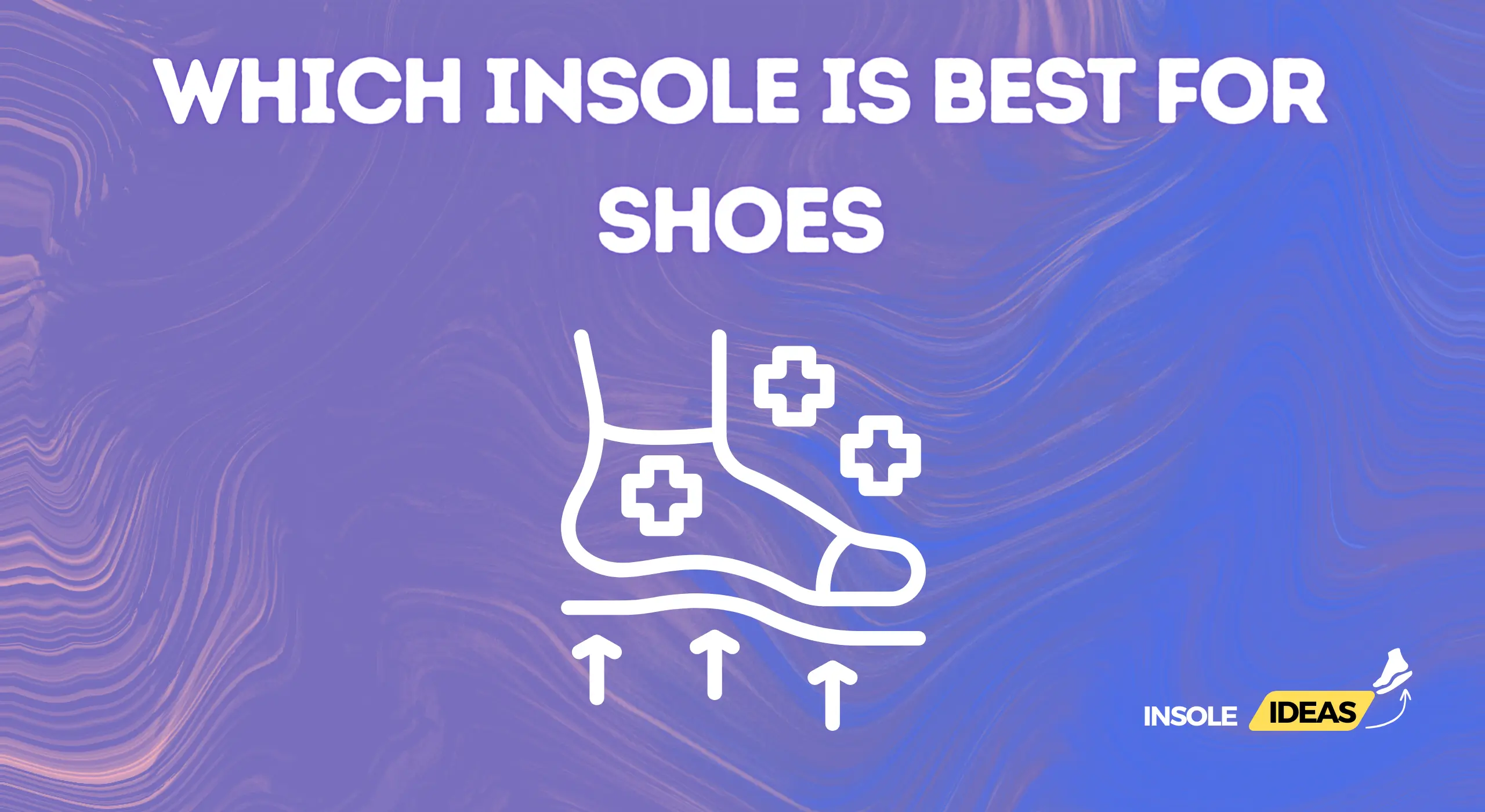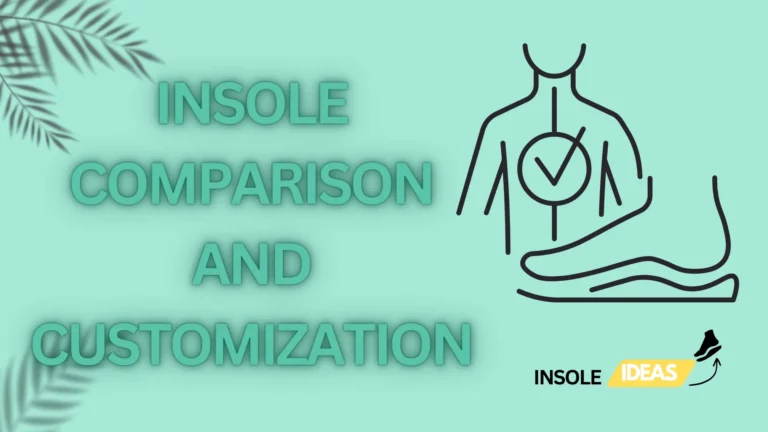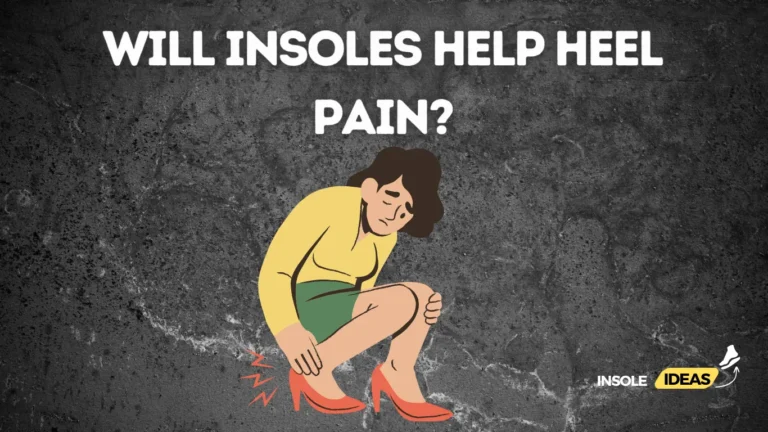Which insole is best for shoes
Explanation of the Importance of Insoles for Shoes
Insoles are crucial in providing comfort, support, and stability to the feet within shoes. They serve as a cushioning layer between the foot and the hard surface of the shoe, helping to absorb shock and reduce pressure points. Insoles also help improve foot alignment and distribute weight more evenly, alleviating discomfort and preventing injuries such as plantar fasciitis or heel pain. Moreover, they can enhance the shoe’s overall fit, making it more comfortable to wear for extended periods.
Purpose of Finding the Best Insole for Shoes
Finding the best shoe insole is essential to ensure maximum comfort, support, and functionality. The correct insole can address specific foot issues or preferences, such as arch support, cushioning level, or material preference. By selecting the most suitable insole, individuals can optimize their footwear experience, reduce discomfort, and minimize the risk of foot-related problems. Additionally, choosing high-quality insoles can prolong the shoes’ lifespan by providing additional protection and support to the interior structure.
Types of Insoles
Custom-made Orthotic Insoles
Custom-made orthotic insoles are specially designed to match the contours of an individual’s foot. Podiatrists or foot specialists often prescribe them to address specific foot conditions or biomechanical issues. These insoles offer personalized support, alignment, and cushioning, making them ideal for individuals with foot problems such as flat feet, high arches, or pronation issues.
Cushioned Insoles
Cushioned insoles are designed to provide additional padding and shock absorption to the feet. They are typically made from soft materials such as foam or gel and offer a plush, comfortable feel. Cushioned insoles are suitable for individuals seeking extra comfort and support during activities such as walking, running, or standing for long periods.
Arch-Support Insoles
Arch-support insoles are specifically designed to support the natural arch of the foot. They help distribute weight evenly across the foot, reduce strain on the arch, and improve overall foot alignment. Arch-support insoles are beneficial for individuals with flat feet or high arches and those experiencing arch-related discomfort or pain.
Gel Insoles
Gel insoles contain inserts or cushions that provide excellent shock absorption and cushioning properties. They are effective in reducing pressure on the feet and providing relief from heel pain or forefoot discomfort. Gel insoles suit various activities and shoe types, offering superior comfort and support.
Memory Foam Insoles
Memory foam insoles mold to the foot’s shape, providing customized support and comfort. They offer excellent cushioning and pressure relief, making them ideal for individuals seeking a plush, adaptive feel. Memory foam insoles are particularly beneficial for individuals with sensitive or achy feet, as they contour to the unique curves of the foot for enhanced comfort.
Factors to Consider
Foot Type and Shape
The foot type and shape vary from person to person, and considering these factors is crucial when selecting the best shoe insole. Individuals with high arches may require insoles with adequate arch support to prevent overpronation and reduce strain on the arches. Conversely, flat-foot individuals may benefit from insoles with arch support to provide additional stability and alignment.
Arch Support Needs
Determining your arch support needs is essential for choosing the correct insole. If you experience arch-related discomfort or pain, opting for insoles with targeted arch support can help alleviate symptoms and promote proper foot alignment. High-quality arch-support insoles can help distribute weight evenly across the foot, reducing the risk of overuse injuries and enhancing overall comfort.
Cushioning and Comfort Level
Consider your desired cushioning and comfort level when selecting insoles for shoes. Cushioned insoles are ideal for individuals seeking additional padding and shock absorption, particularly during high-impact running or hiking. Gel insoles offer superior cushioning properties and can relieve heel pain or forefoot discomfort. Memory foam insoles mold to the foot’s shape, offering customized support and plush comfort for sensitive or achy feet.
Material and Durability
The material and durability of insoles play a significant role in their effectiveness and longevity. Look for insoles made from high-quality materials that offer durability and resilience to daily wear and tear. Orthotic insoles from rigid materials such as plastic or carbon fiber provide excellent support and stability. In contrast, cushioned insoles made from foam or gel offer superior shock absorption and comfort.
Shoe Type and Activity Level
Consider the type of shoes you will wear and your activity level when choosing insoles. Sure insoles are designed for specific shoe types, such as athletic shoes, dress shoes, or work boots. Additionally, consider the level of activity you engage in regularly and choose insoles that can withstand the demands of your chosen activities, whether walking, running, standing, or participating in sports.
Advantages and Disadvantages of Superfeet Insoles
Superfeet insoles are famous for their durable construction and targeted support. They often feature a structured heel cup and biomechanical shape to help stabilize the foot and improve overall alignment. While Superfeet insoles are praised for their effectiveness, some users may find them too rigid or firm for their liking.
Effectiveness and User Reviews of Powerstep Insoles
Powerstep insoles are designed to provide maximum support and cushioning for various foot conditions, including plantar fasciitis and flat feet. Users often praise Powerstep insoles for their comfort and effectiveness in relieving foot pain. However, some individuals may find them bulky or too thick for certain shoe styles.
Quality and Performance of Spenco Insoles
Spenco insoles are known for their high-quality construction and advanced cushioning technologies. They often feature gel inserts or memory foam padding to provide superior shock absorption and comfort. Spenco insoles are highly durable and can withstand heavy use, making them suitable for individuals seeking long-lasting support and protection.
Recommendations and Considerations
Choosing the Right Insole for Specific Foot Conditions
When selecting insoles for specific foot conditions, it’s essential to consider the individual’s unique needs and preferences. For individuals with plantar fasciitis, custom-made orthotic insoles or arch-support insoles with firm support may be beneficial in providing relief from heel pain and promoting proper foot alignment. Those with high arches may benefit from cushioned insoles with added arch support to reduce strain on the arches and distribute weight more evenly across the foot. Individuals with flat feet may find relief from cushioned insoles with moderate arch support to provide stability and cushioning. Additionally, consulting with a podiatrist or foot specialist can help determine the most suitable insole for specific foot conditions and ensure proper treatment and support.
Budget-Friendly Options vs. Premium Brands
When selecting insoles, individuals may choose between budget-friendly options and premium brands based on their budget and preferences. Budget-friendly options, such as store-bought cushioned insoles, can provide adequate comfort and support for everyday use at a lower cost. However, premium brands may offer advanced features, such as custom-made orthotic insoles or specialized cushioning technologies, which can provide superior support and durability. While premium brands may come with a higher price tag, they may be worth the investment for individuals seeking long-term comfort and relief from foot-related issues.
Tips for Proper Fitting and Usage
Proper fitting and usage are essential for maximizing the effectiveness of insoles and ensuring optimal comfort and support. When fitting insoles into shoes, trim them to the correct size according to the manufacturer’s instructions to ensure a proper fit. Insoles should lay flat and snugly inside the shoe without bunching or folding. Additionally, replace insoles regularly, as they may wear out over time and lose effectiveness. To maintain hygiene, remove and air out insoles periodically and clean them according to the manufacturer’s recommendations. Lastly, listen to your body and adjust insoles to address discomfort or fit issues.
Conclusion
Summary of Key Points in Selecting the Best Insole for Shoes
Selecting the best shoe insole involves considering foot type, arch support needs, cushioning level, material, and shoe type. Custom-made orthotic insoles, cushioned insoles, arch-support insoles, gel insoles, and memory foam insoles are among the popular options. Choosing insoles that provide adequate support, comfort, and durability for the individual’s specific needs and preferences is essential.
Final Thoughts on the Importance of Comfortable Footwear Accessories
Insoles are vital in enhancing comfort, support, and stability within shoes, promoting overall foot health and well-being. By selecting the right insoles and following proper fitting and usage guidelines, individuals can enjoy improved comfort, reduced foot-related issues, and enhanced mobility in their daily activities. Investing in high-quality, comfortable footwear accessories, such as insoles, can contribute to overall health and quality of life.



